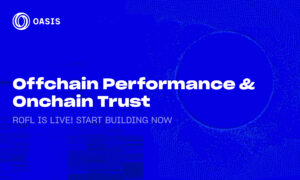In the financial services space, computing systems must deliver three things: persistent security; personalized, data-driven consumer experiences; and a cost-efficiency advantage over competing solutions. By providing unparalleled security, stability and processing power, mainframes frequently serve as the backbone of many mission-critical and high-velocity financial services firms.
As a matter of fact, mainframes provide the processing power to handle a significant volume of complex transactions for 44 of the top 50 banks. From credit card payments and ATM transactions to loans and mortgages, mainframes are relied on to host core applications that deliver secure experiences based on real-time data analytics.
However, as the financial sector advances, an industrywide desire for digital transformation continues to emerge. An increasing number of institutions see the cloud as a valuable path forward, but most of them are in no rush to replace their mainframes despite facing new market pressures, increasingly stringent regulations and unfolding industry dynamics. As the financial industry continues to grow and evolve, legacy applications cannot stay static if they hope to continue meeting ever-changing customer interaction and finance needs.
That being said, the challenge with mainframe modernization is that making changes can be expensive, risky and may lead to reputational damage that ultimately results in lost business.
The Constant Challenge Digital Transformation Presents
Mainframe systems are complicated and require meticulous processes to continue providing core operational value. While mainframes can run newer applications and systems to create new products and revenue streams, ongoing support and modernization of complex mainframe applications is challenging.
First, many modernization projects assume that all of the code in an existing application is correct and the functionality of that code can be precisely captured by programmers on the destination platform. Unfortunately, legacy applications often contain a significant amount of dead and inefficient code as well as old business rules that may no longer apply, so modernization — whether building on top of or around existing applications or moving the application entirely to another platform — can be a costly mistake.
Next, mainframe management and modernization require deep knowledge of and experience with the specific systems, but between a general lack of software developers and a shortage of qualified engineering talent, an institution’s internal team rarely modernizes on its own. Not only do mainframe applications contain millions of lines of interdependent code reflecting the system’s complexity, but developers with in-depth knowledge of such systems are retiring, aging out of the workforce or turning to new careers.
Since developers new to financial systems often require years of rigorous hands-on training to become productive and proficient, it remains difficult for internal teams to comprehend what an application actually does and how altering the code in one section could adversely affect the functionality of the entire system. When a behavior needs to change to support cloud mobility, automation or big data, for example, the code executing that function must be located across an incredibly dense codebase, analyzed and then reanalyzed to ensure any change will not have unintended consequences. But if a developer doesn’t understand the system as a whole, finding the source code that might need to be updated is much like searching for a needle on a farm with multiple haystacks, which ensures making any changes causing downtime is even more risky.
Finally, any system downtime is unacceptable as it can result in lost revenue and harm to an institution’s reputation. Say a customer cannot check their account balance or withdraw money from an ATM. That level of disruption is likely to compel them to take their business elsewhere.
To more easily make changes and upgrade mainframe systems, banks and other financial organizations are leveraging the power of automation.
Enter a Novel Approach to Artificial Intelligence
While AI has been used in the financial services space for years to automate investments, insurance, trading, banking and risk management, a novel approach to the technology can help software developers maintain and extend systems rather than replace them. The key to mainframe system maintenance is precisely identifying functionality expressed by the lines of code intertwined throughout the system — and changing that behavior without unintended consequences.
Using novel AI designed to sift through large quantities of code in the same way humans do, AI-powered tools can aid developers in their frequent search through a deluge of code to rapidly identify the code where they need to make a change. Although code search tools, linters, and static and dynamic analysis tools can help developers improve their productivity, such tools remain inadequate when it comes to helping developers precisely identify the trace of code so that they can make timely changes without exerting a significant amount of cognitive effort. Employing a unique approach to artificial intelligence, modern tools can “reimagine” what the computation logic represents by converting it into concepts, helping developers better understand the codebase and safely make changes to code.
With AI, developers can “ask” where a specific behavior is represented in the code and be guided to a trace of all of the code associated with that functionality using a collaborative approach known as augmented intelligence. Now, software developers no longer have to absorb millions of lines of code to unbury the intent of previous developers because the behavior is revealed at machine speed.
By automating a developer’s “thinking” process of identifying the behavior in code, regardless of how entangled that code is likely to be, AI simply guides the developer to the code they need. No, AI is not yet sophisticated enough to safely make changes on its own. Nonetheless, AI can serve as a knowledge repository that directs developers to precisely where any needed changes must be made. Programmers who leverage AI to augment their work — even in their very first day on the job — can begin making any necessary fixes with confidence.
Between progressively innovative financial service delivery and the increasing cost of mainframe management and modernization, AI dramatically mitigates the risks associated with making changes to the complex mainframe systems powering the financial transactions that move our world forward.



































